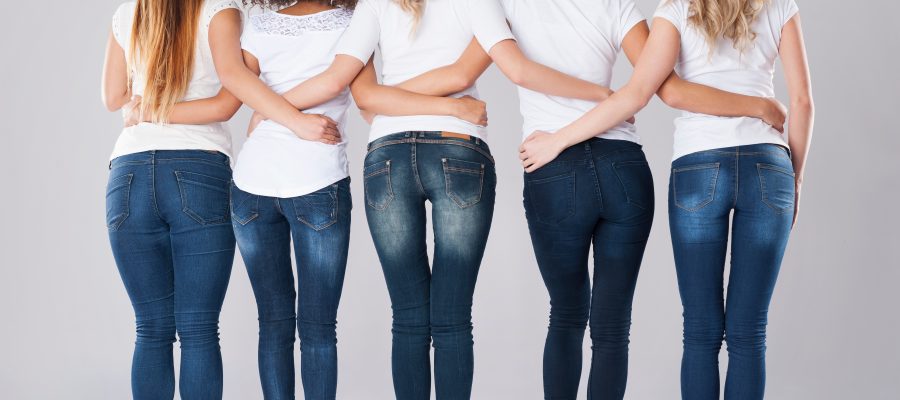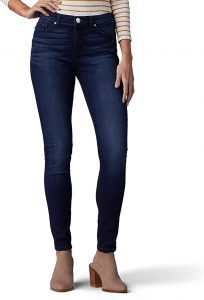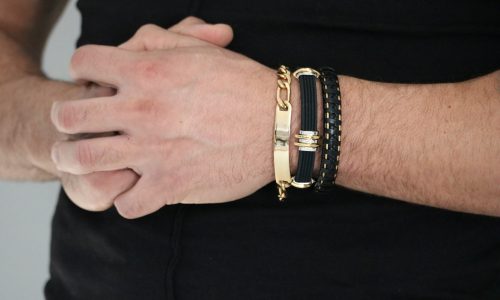The Best Women’s Skinny Jeans

Our Review Process
Don't Waste Your Money is focused on helping you make the best purchasing decision. Our team of experts spends hundreds of hours analyzing, testing, and researching products so you don't have to. Learn more.
Our Picks For The Top Women's Skinny Jeans
- 1. Celebrity Pink Infinite Stretch Mid-Rise Women’s Skinny Jeans
- 2. Lee Sculpting Slim Fit 5-Pocket Women’s Skinny Jeans
- 3. No Nonsense Faux Front Pockets Jeggings Women’s Skinny Jeans
- 4. Levi Strauss & Co. Gold Label Totally Shaping Women’s Skinny Jeans
- 5. Muhadrs 4-Way Stretch Distressed Women’s Skinny Jeans
- 6. Levi’s 721 High-Rise Waist Women’s Skinny Jeans
- 7. Lucky Brand Ava Mid-Rise Slim Fit Women’s Skinny Jeans
A cotton-polyester blend with a little rayon and spandex thrown in makes these jeans extra-comfortable and versatile for everyday wear. Different washes are available and machine washability makes cleanup easy. This mid-rise pair of jeans has traditional five-pocket styling.
Designed for ComfortStay comfortable throughout the day with these jeans, which feature light spandex for extra stretch.
These Lee jeans are made from cotton, rayon and polyester, and you’ll also get a little spandex for stretch. The jeans are designed with sculpting in mind, helping to elongate your legs and slim your hips and backside. They have five pockets and a button closure.
Multiple Color OptionsAvailable in classic denim and a range of colors, this is the perfect pair of jeans if you like variety.
These cotton-polyester jeans feature 7% spandex for a comfortable, stretchy fit. The jeans pull on without a closure and feature faux front pockets and real back pockets for an authentic yet slimming denim look. The jeggings are machine washable for easy care.
Attractive DesignThese easy pull-on jeggings combine the look of jeans with the comfort of leggings for a flattering fit.
These zip-close jeans combine the mid-rise trend with the flattering shaping that comes with skinny jeans. Built-in elastane ensures these cotton-polyester jeans don’t lose their snug shape over multiple wears and washes in the machine. Different inseam sizes are available.
Classic EleganceA worn, distressed look gives these Levi's jeans a vintage vibe, only with super-stretch capabilities.
Buying Guide
Buying women’s jeans can be a process. In fact, one study reported that 46% of women find jeans the most difficult item to buy — there are so many options, so many different fits, and numerous brands to consider. But since two-thirds of women also think getting the right pair of jeans is important, the struggle continues.
Complicating matters is the fact that trends change. Skinny jeans were popular for a while, but younger generations have moved away from the style, preferring more relaxed and voluminous silhouettes. But there’s still a market for skinny jeans, especially since they pair so well with longer tunics and sweaters.
There are a few things you can do to shortcut the jeans-buying process. One is to simply find a pair of jeans that fits well and stick with that brand and sizing for as long as possible. This can work for a while, but it limits you to the style and colors available under that label.
One easy way to cut down your shopping time may be to know the type of jeans that works for your shape. Do skinny jeans look better on you than baggy styles or vice versa? Is a mid-rise style more flattering to your shape than a higher waistline?
Comfort is also a consideration. For that, look closely at the label on the jeans. Apparel manufacturers are required by law to list the fiber content and country of origin, as well as their own identity, on clothing labels. From this, you can learn a lot about how the jeans will fit before you even take them to the dressing room or have them shipped to your house.
You’ll also want to consider the material. As you know, many pairs of jeans are made of denim, which is a type of cotton fabric made with a twill weave. Since denim is a thicker, stronger fabric than other cotton clothing items, many consumers found that they fit better after being worn for a while. But today’s jeans manufacturers build in polyester, rayon and spandex to soften the material in skinny jeans and give it that small amount of stretch that keeps you comfortable throughout the day.
What to Look For
- Jeans come in varying colors, but most consumers know them by the degree of blue dye used in the fabric. Traditionally, the blue faded over many wears, but today you can purchase jeans that already have that lighter look. Distressed jeans are also popular; some fashionistas prefer jeans with strategic holes and rips.
- Skinny jeans are designed to be flattering. They can have a girdle-like effect, slimming you in the areas where you need it while accentuating other areas.
- One type of skinny jeans called jeggings combines the comfort of leggings with the versatile look of jeans. Jeggings are typically meant to be worn beneath longer tops. Look for materials like spandex that will help provide the contouring you’d typically get with skinny jeans.
- Pockets can be an important part of any pair of women’s jeans. Traditionally, jeans come with five pockets — two in back and three in front. With jeggings, the front pockets are usually faux, but look for a pair with back pockets if you want someplace to store items while you’re going through your day.
- Machine washability is important in any pair of jeans. Some will fade or shrink, so look for jeans that have a lower cotton content if you’re concerned about that. You might find that you like the fit of your jeans better after you’ve worn them for a while, leading you to wear them multiple days before you wash them.
- Blue isn’t the only color for jeans. You can find them in black, white and a wide range of other colors.
More to Explore
Jeans have been around since the 1800s, but in the 1960s, they became a statement piece. This is thought to have started in the spring of 1965, when United Press International (UPI ) described a group of ministers at a protest as wearing the “blue denim uniform” of the civil rights movement.
Protestors weren’t necessarily being political by donning a denim wardrobe; after all, fighting for civil rights was serious work, which made denim a more practical option. Still, denim also symbolized the work clothes worn by slaves and sharecroppers, as well as forming solidarity with blue-collar workers and women, since denim workwear was unisex.
During Martin Luther King, Jr.’s march on Washington, the jeans he and allies wore got plenty of attention. Soon, white activists were wearing denim as a social-class identifier.
However, denim also came to represent the rugged individualism of America (think cowboys) and became a much-coveted international export as well, so its desirability has transcended politics.

















